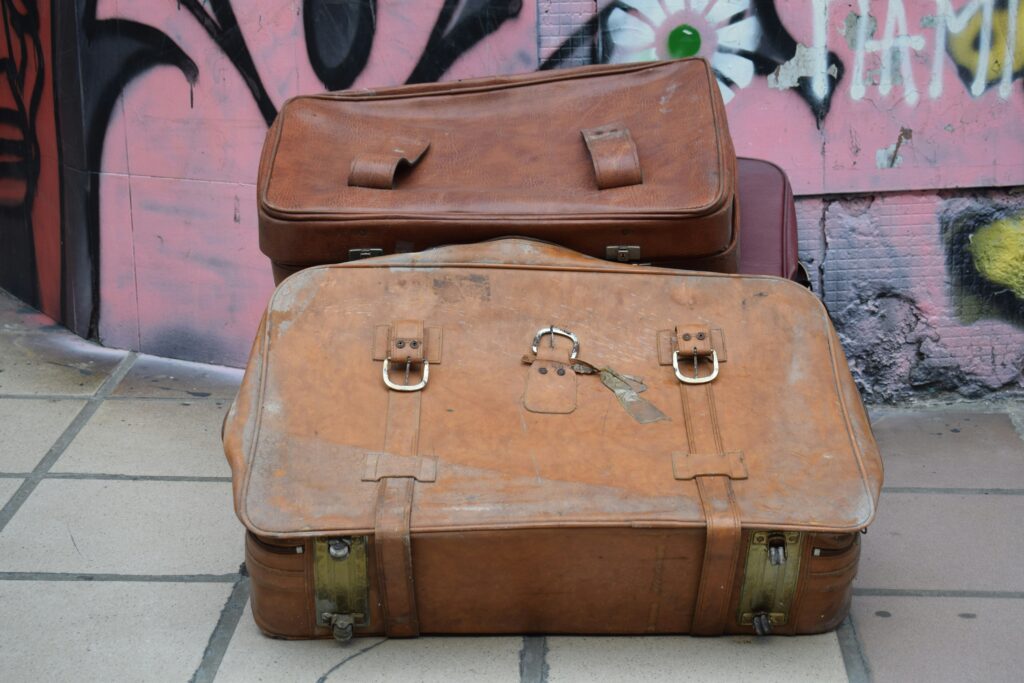Planning Your Trip
Proper planning ensures a smoother travel experience with kids. Focusing on kid-friendly destinations and maintaining a schedule around sleep times helps significantly.
Choosing Kid-Friendly Destinations
Select destinations with child-centric activities, museums, or parks. Opt for places that offer family-friendly amenities like playgrounds, swimming pools, or kid’s clubs to keep children engaged and happy. Research reviews from other parents and consider health and safety measures specific to your destination.
Scheduling Around Nap and Bedtimes
Plan your travel itinerary around your children’s sleep schedules to avoid crankiness and meltdowns. Set travel times to coincide with regular nap times if possible.
Opt for early or late flights when kids are more likely to sleep. Ensure accommodations provide quiet environments for uninterrupted rest, and keep routines as consistent as possible even when on the go.
Packing Essentials
Packing efficiently ensures a smoother travel experience with kids. The key is to bring necessary items while keeping the load manageable.
Travel Gear for Kids
Essential travel gear includes car seats, strollers, and baby carriers, depending on the child’s age. For infants, a compact stroller that folds easily works great. For older kids, lightweight travel strollers are perfect.
Always pack travel-friendly car seats if renting a car. Additionally, pack a portable crib if your accommodation doesn’t provide one.
Entertainment and Snacks
Keeping kids entertained and fed helps avoid meltdowns.
- Pack age-appropriate toys like coloring books, small puzzles, and handheld games.
- Digital devices with pre-downloaded movies or educational apps can also be lifesavers.
- Snack packs with healthy options like fruit slices, granola bars, and crackers are essential.
Use spill-proof sippy cups for younger kids. Include a mix of familiar favorites and new snacks to keep them engaged.
Navigating Airports and Stations

Navigating airports and train stations with kids can be challenging. However, with a few practical strategies, the process becomes smoother and more manageable.
Security Tips with Children
Security checks are often stressful. I suggest arriving early to allow ample time. Use the family lanes available at most airports to avoid long waits. Pack liquids, snacks, and electronics for kids in clear, accessible bags.
This helps speed up the security screening. Dress your kids in easy-to-remove shoes and avoid complicated clothing like belts or jewelry that could slow down the process. Explain the procedure to your children before arriving at the security checkpoint to reduce anxiety and make the experience less intimidating.
Keeping Kids Engaged During Layovers
Layovers can be long and tiring. I recommend finding play areas in airports, which many major hubs now feature. Pack a variety of small toys, books, and electronic devices to keep children occupied.
Interactive games and educational apps can also provide entertainment. Snacks are essential; pack a mix to cover different cravings. Explore the terminal with your kids if time permits; this can be a fun and educational experience.
Keep a list of engaging activities and games that don’t require many materials, like ‘I Spy’ or storytelling, to keep children entertained without additional baggage.
On the Road Activities
Keeping kids entertained during travel is crucial. Engaging activities can make the journey enjoyable and stress-free for everyone.
Games to Play in the Car or Plane
Interactive games can distract kids and keep them occupied. I recommend classics like “I Spy,” where one player describes something visible to others, and the rest guess what it is.
For older kids, “20 Questions” can stimulate their curiosity and thinking as they try to guess a chosen object within 20 questions. “Travel Bingo” is another great option; create or purchase bingo cards featuring common travel sights, and your kids can mark off items as they see them.
Packing small travel games like magnetic chess or checkers can also be effective. Storytelling can be fun too; I often start a story, then let the kids take turns adding to it. Audiobooks or kid-friendly podcasts can be lifesavers, turning idle time into an entertaining experience.
Stops and Breaks for Road Trips
Planned stops and breaks can prevent travel fatigue. Every few hours, find a safe, spacious rest area or park where kids can stretch and release energy. I look for places with playgrounds or open spaces so my kids can run around.
Museums, local attractions, or scenic spots en route can add excitement to the trip. I often research and plan our breaks based on these points of interest. Packing a picnic can make stops more enjoyable; kids appreciate the novelty of a meal outdoors.
For restroom breaks, I recommend marking rest areas or gas stations along the route beforehand. Apps like Google Maps can help identify convenient stopping points. Regular breaks not only reduce stress but also make the journey more memorable.
Staying Safe and Healthy
Traveling with kids requires extra caution to ensure their safety and health. Follow these key tips to keep everyone safe and well throughout the trip.
First Aid and Medication Tips
Keep a well-stocked first aid kit in your travel bag. Include:
- adhesive bandages
- antiseptic wipes
- basic medications
Like pain relievers and antihistamines. Check expiration dates before packing.
Know your child’s dosage for any medication brought along. Keep prescription medications in original containers to avoid confusion.
Create a list of local medical facilities for your destination. Search for nearby hospitals or urgent care centers. Save their contact information in your phone for quick access. Carry sunscreen and hand sanitizer for outdoor activities and hygiene.
Managing Dietary Needs on the Go
Pack snacks that meet your child’s dietary requirements. Include:
- fresh fruits
- vegetables
- whole-grain crackers
Avoid sugary snacks to prevent energy crashes. Use insulated bags to keep perishable foods fresh. Ensure you have enough water to stay hydrated.
Research dining options at your destination. Look for restaurants with kid-friendly menus or those that accommodate dietary restrictions. Use apps like Yelp or TripAdvisor to read reviews. Bring along any necessary supplements or special foods in case alternatives are unavailable.

 Cynthian Holleyori is a skilled article writer who has been integral to the development of Toddler Health Roll. Her deep understanding of child health and development is evident in her well-researched and practical articles, which provide parents with essential guidance on raising healthy toddlers. Cynthian's contributions have significantly shaped the platform, ensuring that it addresses the most pressing concerns of parents and caregivers.
Beyond her expertise in toddler health and nutrition, Cynthian also delves into the mental and emotional well-being of young children. She offers valuable parenting strategies that help families foster a nurturing and supportive environment for their toddlers. Her dedication to building Toddler Health Roll has made it a trusted and comprehensive resource for parents committed to their children's growth and happiness.
Cynthian Holleyori is a skilled article writer who has been integral to the development of Toddler Health Roll. Her deep understanding of child health and development is evident in her well-researched and practical articles, which provide parents with essential guidance on raising healthy toddlers. Cynthian's contributions have significantly shaped the platform, ensuring that it addresses the most pressing concerns of parents and caregivers.
Beyond her expertise in toddler health and nutrition, Cynthian also delves into the mental and emotional well-being of young children. She offers valuable parenting strategies that help families foster a nurturing and supportive environment for their toddlers. Her dedication to building Toddler Health Roll has made it a trusted and comprehensive resource for parents committed to their children's growth and happiness.
